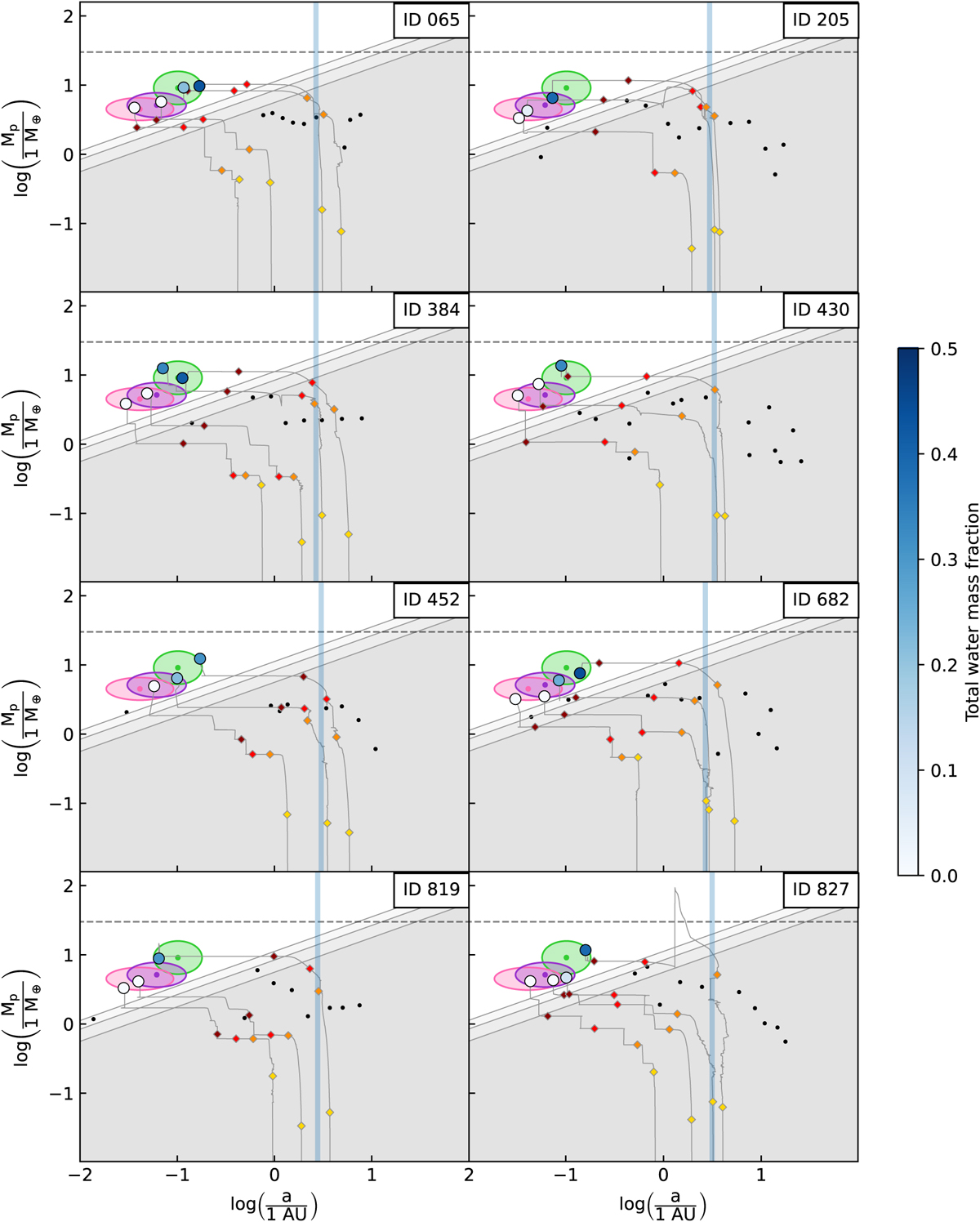Fig. 12

Download original image
Planetary mass vs semi-major axis plots of eight synthetic planetary system analogues for the observed HIP 29442 system (one per panel, with the Bern model system ID indicated in the upper right corner). These planetary system analogues are taken from the nominal NGPPS population (Emsenhuber et al. 2021a,b) for solar mass stars with an extended formation phase (Emsenhuber et al. 2023) and an improved evolution model (Burn et al. 2024). The green, pink and purple ellipses show the observational values for planets b, c, and d respectively, with a 25% tolerance in log that was used when identifying synthetic analogues for each planet. The areas shaded in grey show simple RV biases of 0.50, 0.75 and 1.00 m/s respectively. Synthetic planets below the 1 m/s RV bias are likely not observable and are shown as black dots, down to a mass of 0.5 M⊕. For the synthetic planets above an RV bias of 1 m/s, which form the part of the planetary system that could be observed, the planet’s total water mass fraction is indicated by the marker colour, while the formation tracks are shown as black lines. For each formation track, the temporal evolution is indicated by diamond-shaped markers, which show the position of the planet at 0.1 Myr (yellow), 1 Myr (orange), 2 Myr (red) and 3 Myr (dark red). The vertical light blue line indicates the location of the water ice line of each synthetic system, which is assumed to be constant. The dashed black line indicates a mass of 30 M⊕, corresponding to the upper limit for the critical core mass given by Bodenheimer & Pollack (1986).
Current usage metrics show cumulative count of Article Views (full-text article views including HTML views, PDF and ePub downloads, according to the available data) and Abstracts Views on Vision4Press platform.
Data correspond to usage on the plateform after 2015. The current usage metrics is available 48-96 hours after online publication and is updated daily on week days.
Initial download of the metrics may take a while.


